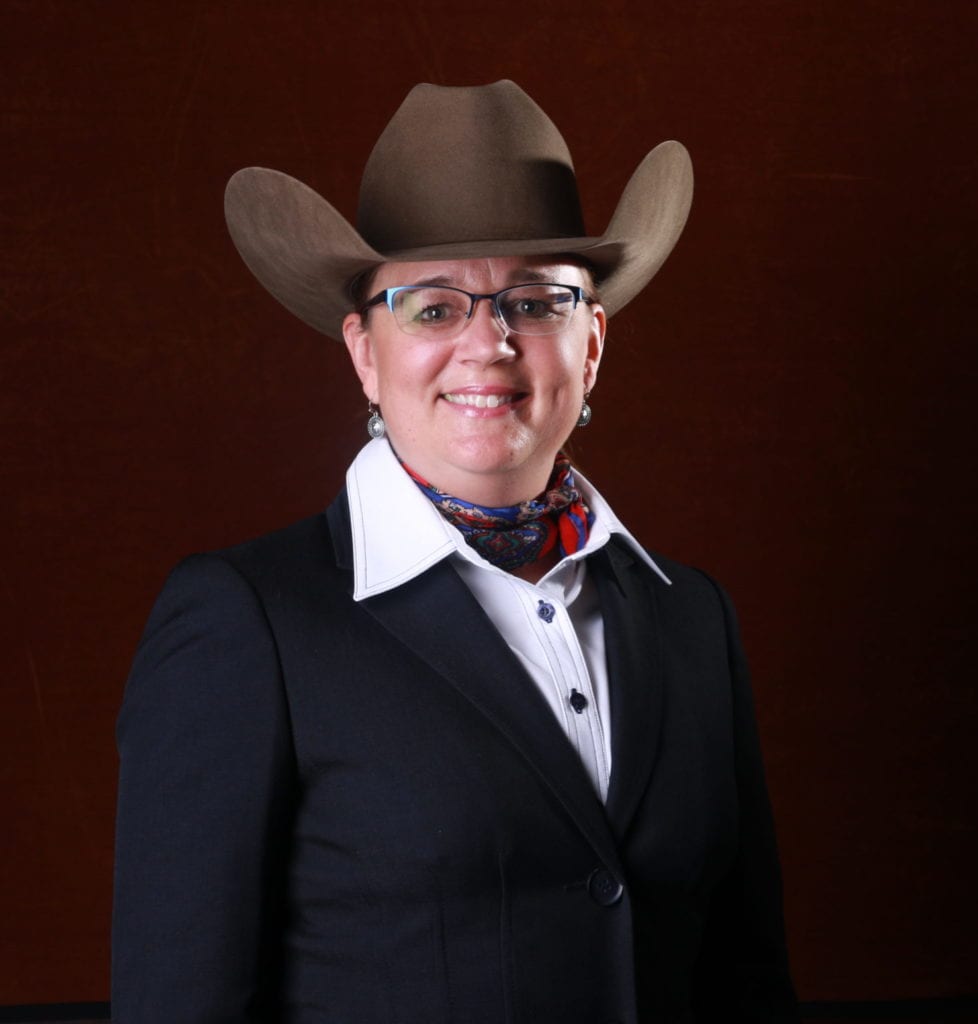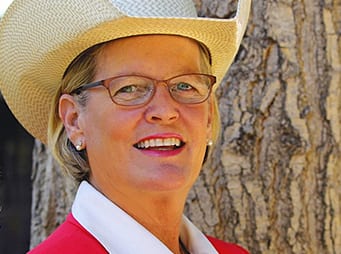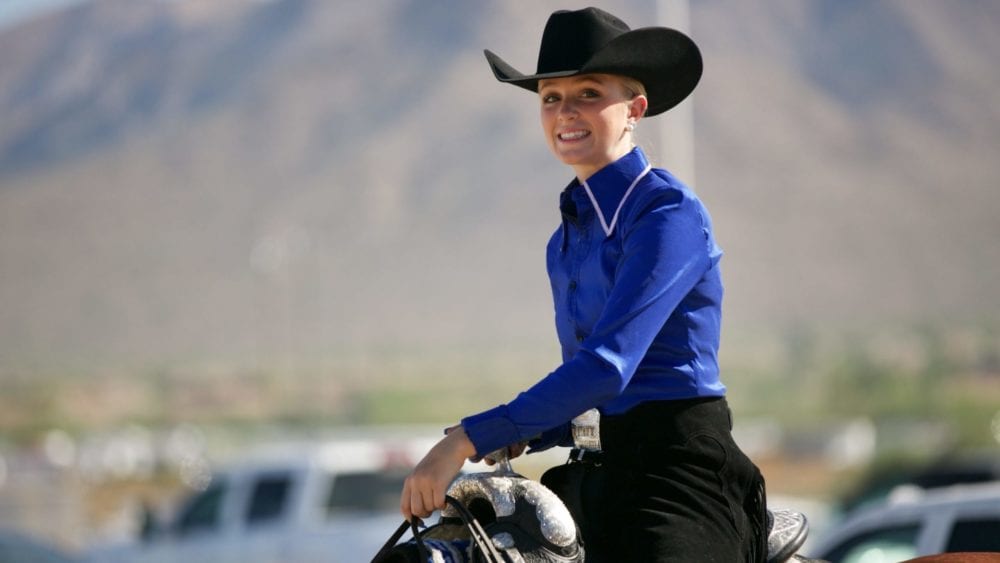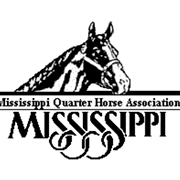While watching technical classes at some of the major shows, it can be difficult for the untrained eye to watch. You might ask yourself, “how are the judges going to pick a winner from this class?” or “what are they looking for?”
With horse riding, like most things in life, some competitors just seem to have a knack for it. They are the riders that can make the most challenging pattern look like a walk in the park, or they can ride a nervous three-year-old to a world championship. Maybe they can ride a flawless horsemanship pattern, or perhaps they can lay down a showmanship run that looks like a graceful ballet dance.
Every competitor has their strengths and weaknesses, but some riders have the “gift.” But what exactly makes a rider stand out from the crowd? And what do trainers/coaches look for in a special rider?
GoHorseShow spoke with riding coaches, Kimberly Leiter and Holly Hover, to hear their opinions on what makes a rider “gifted.”
 AQHA Judge Kimberly Leiter, an instructor and the assistant equestrian coach at the University of Tennessee in Martin told us what she looks for in a rider “that has it all.”
AQHA Judge Kimberly Leiter, an instructor and the assistant equestrian coach at the University of Tennessee in Martin told us what she looks for in a rider “that has it all.”
“For me, the signs of a gifted rider are feel and connection. All riders can learn techniques and skills to improve their seat and hands, but in my opinion, great riders are naturally able to connect with their horse. This connection, to me, is like a great pair of dancers performing an intricate routine. There are cues and communication between the pair, but the audience cannot see them,” she explained.
In classes such as horsemanship and western riding, having the proper feel and connection with your horse can put you a step above the competition. This, paired with the ability to cue for a new movement or gait without detection from judges, often leads to these riders making it to the winner’s circle.
She continued, “A rider that has great feel can get the most out of a horse with soft and subtle cues. And these cues do not detract from their seat, body position, or balance. Connected riders use their seat and legs as their primary tools of communication; the hand is secondary. They have naturally good balance, and they use that balance to influence their horse positively. A rider that has great feel will have great timing and rhythm.”
 AQHA Judge Holly Hover, a long time trainer, also agreed with Leiter, “Gifted riders most importantly have ‘feel’- something that is perhaps most difficult of all to teach, some might say impossible.”
AQHA Judge Holly Hover, a long time trainer, also agreed with Leiter, “Gifted riders most importantly have ‘feel’- something that is perhaps most difficult of all to teach, some might say impossible.”
A rider’s ability to feel their horse’s movement and react can help them prepare for the worst possible scenarios during a class.
Holly also went on to add, “I would add gifted riders are observant and notice the detail and have the ability to adjust their horses’ reactions.”
Attention to detail, in even some of the most simple patterns or classes, may put competitors one point closer to the top.
“After all, horses are not inanimate objects, they aren’t a motorcycle, but living beings who react differently to different environments and factors,” she explained further.
This may include riding through a nervous horse or your horse reacting to a new arena poorly. To make it to the top, both horse and rider must work as one and fully understand what the other is asking of them, and the rider must be able to sense what their horse is feeling at that moment.
Lastly, Hover described gifted riders as being confident and sure in their abilities. Confidence in the show pen can change the whole demeanor of both horse and rider. A confident rider looks like they are there to win, and their horse will feel that confidence and feel at ease.
Next time you watch a horse and rider team at work, keep these things in mind. Can you see their connection? Is the untrained, or even trained eye able to see the cues from rider to horse? Does the rider seem confident, and do they show attention to detail? If so, you may just be watching a gifted rider in action.









